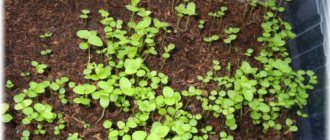Description
Growth
In its natural environment , Rowley's groundsel, scientifically senecio rowleyanus (Senecio rowley), grows in the arid part of Southeast Africa, in Namibia . Habitat: mountainous areas where precipitation in the form of rain is rare. This is why exotic is so resistant to sun and drought. The flower is a succulent. It accumulates moisture in its leaves, therefore it is moisture-resistant and unpretentious.
Botanical review
Rowley's ragwort belongs to the perennial plants of the numerous genus of ragworts of the Asteraceae (Asteraceae) family, distributed throughout the world and growing in all climatic conditions, provided that the exotic plant is properly cared for. It grows quite quickly. In nature, the height reaches 1.5 - 2 m. Adapted varieties at home grow up to 50 cm.
Rowley's Christberry has long, fragile shoots. The stems take root in the internodes. The leaves have short petioles, round, berry-like and small, they reach a diameter of 1 cm. At the end there is a short tail. The leaves grow in regular sequence. Flowering occurs in May and lasts 2 – 3 months . Flower stalks-baskets are dense, long, connecting white and pink tubular flowers. The variety is distinguished by fragrant inflorescences.
Appearance
The leaf is spherical. The structure of multilayer leaf tissues retards the evaporation of liquid, the skin of the leaves is dense. The leaves are light green, spherical, pointed at the ends. Stems are creeping shoots that hang down and curl well. Their length reaches up to 1 m. The flowers are tubular, white, with a purple pistil.
It is used in flower beds as a soil cover, but most often gardeners grow this variety in hanging pots on balconies and loggias.
A hybrid variety of ragwort, Rowley - Variegant, has been developed, distinguished by white blurred blotchy spots on the leaf balls.
Diseases and pests
High immunity to most vegetative diseases is another strong feature of the “green pearl”. Basically, a flower can become sick due to improper care or become a victim of insect pests.
You can make a “diagnosis” of a plant and take timely measures based on external signs.
- Gray rot. It affects the roots due to excessive watering. The leaves become covered with yellow spots and dry out at the edges. To save the flower, you need to reduce the amount of moisture and treat it with copper oxychloride.
- Powdery mildew. Nitrogenous fertilizers are the cause of the white coating on the leaves. The affected parts of the plant must be removed, and the remaining parts must be wiped with a weak solution of Fundazol.
- Spider mite. This pest can only be noticed by the cobwebs on the shoots and leaves.
- Thrips. They dehydrate the plant, leaving traces in the form of yellow “marks”.
- Shield. This insect can be seen at the bottom of the leaf. Leaves sticky spots on the surface of plants.
Photo
The photo shows Rowley's cross so that you have a clear idea of this plant:
Home care depending on the time of year
Lighting
Gardeners note the special resistance of Rowley's ragus to any conditions. However, the flower prefers bright but diffused light. The flower should be shaded from the burning sun to avoid leaf burns. It is best to place flower baskets on the east or west side of the apartment.
In winter, when daylight is short, additional lighting with special lamps for 2-4 hours is desirable. Lack of light slows down the growth and maturation of buds .
Temperature
In winter and autumn, Rowley's ragwort calmly tolerates cool air, the permissible temperature range is 8 - 13 ° C. The flower can overwinter on the loggia in the absence of drafts and dampness. In spring and summer, the optimal thermal regime for keeping a flower is considered to be a temperature of 20 - 27 oC.
Important: when the temperature drops sharply below acceptable standards, the shoots become very elongated, the leaves turn pale, become small, flowering is delayed or stops altogether.
Watering
The natural environment is arid areas, so Rowley's ragus does not need a lot of moisture . In summer, watering should be regular, in small doses, every 4 to 5 days, as the top layer of soil dries.
Excessive watering leads to thinning of the stems, the leaves thin out, become sluggish, small, and gray rot may appear.
Only purified, settled, soft water is selected for irrigation . For softness, it is recommended to slightly acidify the water with citric acid. In winter, watering is reduced; it is enough to moisten the soil once every 2–3 weeks. If the temperature is above 17 ° C, watering can be increased slightly.
The condition of the soil should be checked. Dampness and prolonged drying of the substrate are unacceptable. Moisturizing should be uniform and regular all year round.
When watering, water should not get on the leaves; getting the peas wet leads to brown spots; stagnation of water in the tray is also unacceptable, since getting the roots wet causes rot.
Air humidity
Rowley's ragwort prefers dry air . Pots can be placed near heating appliances. It is not recommended to spray the leaves; the succulent does not require additional moisture.
Priming
For Rowley's ragwort, the soil should be slightly acidic, loose, and moderately fertilized. Drainage is required. The substrate must be breathable. This variety prefers loam mixed with coarse river sand. It is better to purchase a ready-made substrate for cacti and succulents. You can prepare your own soil mixture:
- Turf soil – 2 hours.
- Leaf soil - 2 hours.
- River coarse sand -1 tsp.
- Crushed charcoal – 1 tsp.
The planting container should be wide, small and shallow. Gardeners advise using clay pots, without a glazed surface, rough.
For young flowers, the substrate should be additionally fertilized. The soil mixture should be as follows:
- Leaf soil - 1 hour.
- High peat – 1 hour.
- Humus – 1 hour.
- Sand – 1 hour.
- Brick chips – 1 tsp.
Broken brick can be replaced with perlite.
Top dressing
Fertilize should be 2 times a month during the growth period . In a dormant state - in autumn and winter, Rowley's godson does not require fertilizing. It is better to use specially purchased liquid mineral fertilizers for cacti or succulents.
Important: avoid oversaturation of the soil with nitrogen fertilizers.
Care instructions
When placing Rowley in the house, you should give preference to the south, west and east sides of the window. If the flower stands in the north, then the lack of lighting will affect its appearance. In this case, the leaves will become small and the stem will become elongated. It is better to place the ragwort in direct sunlight in the morning and evening. At lunchtime, it is better to shade the flower, since exposure to scorching sun rays can be destructive for it.
Watering is also quite important in caring for Rowley. To ensure that there is no chlorine in the water, it is recommended to leave it for a day before use. In some cases, a little acetic or citric acid is added to the liquid. In winter, it is recommended to reduce watering to a minimum (however, the soil should not dry out completely). It is not recommended to flood the plant with water, as this often leads to rotting of the root system. During the period of active growth, it is necessary to ensure that the soil in the pot is always slightly moist, but not wet.
We recommend: Why you shouldn’t keep flowers in the bedroom: poor sleep, allergies, mold on the walls
The plant feels most comfortable at room temperature +22-26° C. In winter, it is recommended to maintain a temperature regime of +12-15 degrees. If the indicators drop below, then the ragwort will most likely freeze, and if it is higher, then its leaves will fall off. High air humidity is not important for comfortable plant growth. The flower feels absolutely comfortable with central heating.
Rowley's ragwort needs to be fertilized periodically to speed up its growth. Loose nutrient mixtures are perfect for these purposes. It is worth paying attention to the ready-made version of mixtures for succulents and cacti. They contain useful components such as perlite, brick chips and vermiculite. To prepare the nutrient mixture yourself, take peat, humus and leaf soil in equal proportions, and also add brick chips and sand. All ingredients are thoroughly mixed before use.
Advice The resource mschistota.ru recommends that during the period of active growth, do not forget to fertilize the soil every 2 weeks with mixtures containing a minimum nitrogen content. Ideal for rapid flower growth, use mixtures for cactus or succulent plants.
Pruning and replanting
Rowley's ragwort does not require constant pruning. The smaller the stems are cut, the thicker the green mass grows. This variety requires only pinching the upper leaves and shoots to form a beautiful shape. Further growth slows down.
It is advisable to replant no more than once every 3–4 years . Young flowers tolerate replanting well every year. The pot for replanting should be 4–5 cm larger in diameter than the previous one. Drainage is required.
The substrate for replanting a flower includes equal parts of leaf soil, humus soil, sand, vermiculite, and peat. The shoots are fragile, transplantation requires skill and caution.
Rowley's cross at the age of 5 - 7 years does not need to be replanted. It is enough to update it by cutting off overgrown stems. Cut parts of the stem can be used for propagation by cuttings .
If the composition of the substrate is not suitable, is clogged with mineral salts or there is no drainage, the flower must be urgently replanted to avoid viral infections and diseases.
Varieties and varieties
In addition to Rowley's ragwort (Senecio rowleyanus), there are other varieties of the plant. There are the following varieties of indoor flowers belonging to the Asteraceae family (genus Asteraceae):
- Bloody godson. The stems of the plant are erect and can reach a height of 60 cm. The leaves are oval in shape with jagged ends. The foliage color is green on the outside and scarlet in the middle. The inflorescence looks like a daisy.
- Common groundsel. This is a weed plant, the length of which reaches about 50 cm. The stems in the flower are erect, and the leaves are similar in appearance to dandelion.
- The ragwort is large-tongued. It has creeping stems without woodiness. The plant can reach 3 m in length. The leaves are wide, about 8 cm, with five sharp ends. The inflorescences are spherical in shape (6 cm in diameter) with yellow tongues.
- Rowley's ragwort variegated. The leaves of the plant look like peas with white or orange splashes, which may fall off from time to time.
- Raspberry mikaniiformes. The leaves are similar to ivy, and the shoots are quite long. Flowers are yellow in color with a pleasant aroma.
- Broadleaf ragwort. Its leaves are sparse, triangular in shape. The inflorescences are orange in color and look like tubes. The root system is horizontal, shoots can reach a length of 80 cm.
- Meadow ragwort. The leaves of this plant are elongated and oval in shape. The height of the shoots reaches 60 cm in length.
Among the varieties of the plant you can also find Jacob's ragwort, spring grass, ash grass, diamond-leaved and flat-leaved.
Reproduction
An adult Rowley's cross requires rejuvenation when the stems become bare, the leaves begin to shrink, and the stem dries out at the base.
Propagation by cuttings:
- Several stems - cuttings, 6 - 7 cm in length, are cut diagonally.
- They are pressed well into the moist soil, while the leaves remain on the surface of the soil.
You can use the method of bending the stem - propagation by layering:
- The long stem is cleared of leaves at the rooting site.
- Sprinkle with substrate, moisten, and feed with rooting agent.
- The cuttings take root within 7–8 days.
- After rooting, the stem is cut off from the branch - layering.
- Later, you can separate the young shoots from the mother bush and transplant them into a separate pot.
Attention: it is better to carry out cuttings in spring or summer, in the warm, light season; the period of rooting and adaptation is easy and painless.
The temperature during rooting of cuttings or layering is 13 – 16°C. 7 - 9 cuttings are usually planted in a hanging plant pot or pot at a time to make the flowing shoots decorative and luxuriant.
Propagation of Rowley's cross by seeds:
- Sowing is recommended in March.
A layer of 3–4 cm of drainage is poured into a small box.
- Place a low layer of special substrate (the composition is the same as when planting).
- The seeds are sown from above freely, scattered, without pressing into the ground.
- Sprinkle a thin layer of substrate on top.
- For a greenhouse effect, the box is covered with film or glass.
- Ventilate 2 times a day, collect condensate.
- The substrate is regularly moistened.
- Germination temperature – 20 – 23°C.
For successful germination, only freshly collected seeds are required .
A short video showing in detail how to propagate the plant:
Harm from ragwort: myths and truth
There are many myths among gardeners that ragwort rowley destroys the liver, contributing to the development of cirrhosis and even cancer. Many varieties of such indoor plants are poisonous to one degree or another. If they come into contact with the skin, they can cause allergic reactions and skin irritation. But at the same time, ragwort does not cause serious danger to human health if you do not eat them.
The plant has poisonous toxic juice that provokes allergies. You should not grow Raleigh ragwort with its delicious green berries where there are small children. Despite the prohibitions, they often reach out to the berries to try them. Adults should also avoid exposure of the mucous membranes to the poisonous juice. To do this, it is recommended to wear gloves and goggles during all manipulations.
Diseases and pests
Green pearls are not susceptible to disease. Usually its condition worsens due to violation of the rules of care or infestation with insects. Most often it is affected by yellow spots with dryness around the edges. This is how gray rot manifests itself. It is formed due to excess watering. In order to cure ragwort rowley, it is enough to water it less and treat it with copper oxychloride.
If a cobweb appears between the leaves, then the succulent is probably affected by spider mites. And yellow specks and dehydration are characteristic of thrips infection. In order to get rid of parasites, it is enough to treat the plants several times with insecticides and wash them with laundry soap dissolved in water.
Currently reading:
Leading researcher at the laboratory of vegetable and berry crops, Yakut Scientific Research Institute of Agriculture, Siberian Branch of the Russian Academy of Agricultural Sciences, Republic of Sakha (Yakutia).











